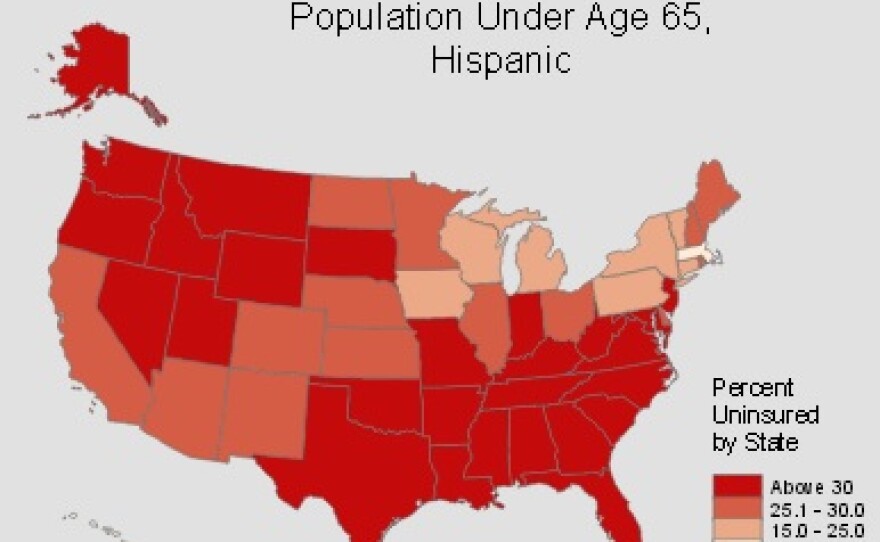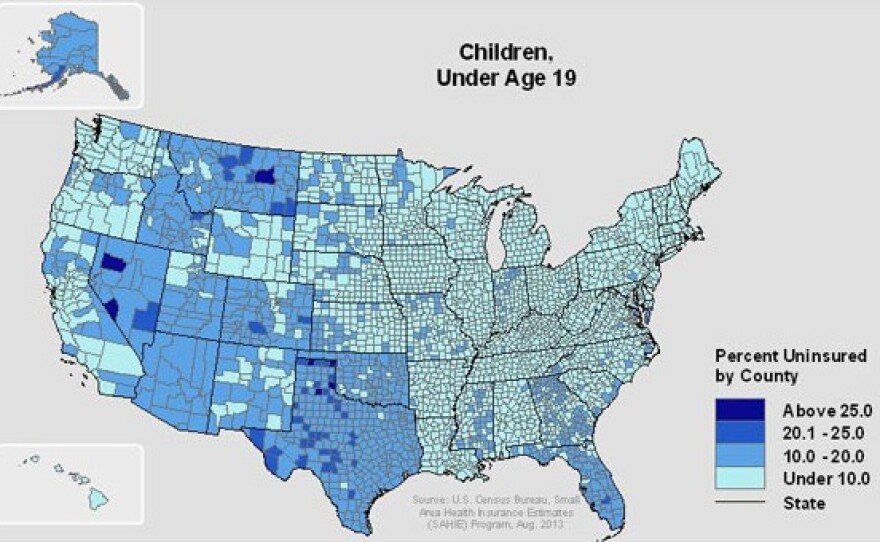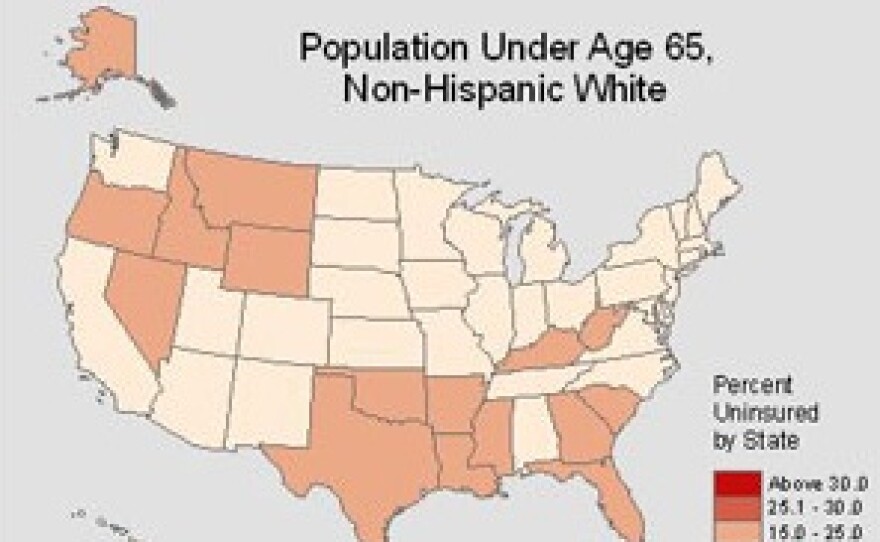


When you look at a map of places in the United States where people don't have health insurance, what's clear is there were a lot of uninsured people in the Southwest in 2011. The U.S. Census Bureau released a data analysis Thursday that looks at the nation's uninsured population and breaks it down by race, income, age, and sex, down to the county level.
Many uninsured people live along the U.S.-Mexico border in states like Texas, New Mexico, and California. In fact, Texas is number one in the country, with 25.7 percent of its population lacking health insurance. New Mexico follows closely in 4th place at 23 percent, while California ranks 10th with more than 20 percent of its population uninsured.
In Southern California, uninsured rates are higher than in northern areas of the state. So perhaps it makes sense, then, that there is a growing market for medical services across the border in Mexico - and a growing clientele for these services in the U.S.
And across the nation, Latinos still generally represent the largest percentage of uninsured, more than 30 percent in most states.
In Texas and Nevada, more than 30 percent of Latinos under the age of 65 were uninsured in 2011, whereas 25 to 30 percent of non-Hispanic Whites in those states were uninsured.
In New Mexico, Arizona, and California, 25 to 30 percent of Latinos were uninsured. This compared to uninsured rates for non-Hispanic Whites of less than 15 percent.
The disproportionate number of uninsured Latino residents may contribute to the expectation that the Latino population, especially in states like California, will benefit significantly from the implementation of the Affordable Care Act.
Adults generally lacked insurance more often than children. Uninsured rates for adults age 18 to 64 range from 6 to 30 percent across the U.S., whereas uninsured rates for children are on average half that. That's likely because so many children from low income families are covered by their state Medicaid programs, although this means little for dental care.
As states prepare to open health exchanges and expand Medicaid programs, Census Bureau analysts suggest the Small Area Health Insurance Estimates program (SAHIE) data may help to isolate specific areas where uninsured rates remain high or where there are large numbers of people who are eligible for federal and state programs.






